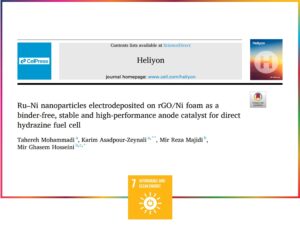
Researchers from Near East University, in collaboration with co-authors, have spearheaded a study focused on the development of a bimetallic Ru–Ni nanoparticle electrocatalyst on reduced graphene oxide decorated Ni foam (Ru–Ni/rGO/NF). This innovative catalyst, synthesized through electroplating methods, is poised to redefine the landscape of direct hydrazine-hydrogen peroxide fuel cells (DHzHPFCs), aligning with the principles of Sustainable Development Goal 7 (SDG 7) – Affordable and Clean Energy.
The study, encompassing theoretical and empirical sections, employed advanced characterization techniques to analyze the structural and electrochemical properties of the synthesized electrocatalysts. The Ru1–Ni3/rGO/NF electrocatalyst emerged as a standout candidate due to its structural stability, ease of synthesis, low cost, and high catalytic performance, specifically in hydrazine oxidation reactions.
In the context of SDG 7, which aims to ensure access to affordable, reliable, sustainable, and modern energy for all, this research contributes significantly to the development of cleaner and more efficient energy sources. The synthesized catalyst offers a promising solution for powering DHzHPFCs, contributing to the global push for sustainable energy alternatives and reduced environmental impact.
The conclusions drawn from the study emphasize the electrocatalytic efficiency of Ru1–Ni3/rGO/NF, showcasing its low activation energy for hydrazine oxidation and increased electroactive surface area. Fuel cell performance tests demonstrated an impressive power density of 206 mWcm−2, underscoring its potential for practical applications in clean energy production.
In essence, Near East University researchers, alongside co-authors, have made strides in advancing sustainable energy solutions through the development of an efficient nanocatalyst. The Ru1–Ni3/rGO/NF electrocatalyst aligns with SDG 7’s objectives by providing a cleaner and affordable energy alternative, contributing to global efforts to transition towards sustainable and environmentally friendly power sources.
More Information:
https://www.cell.com/heliyon/pdf/S2405-8440(23)04095-1.pdf